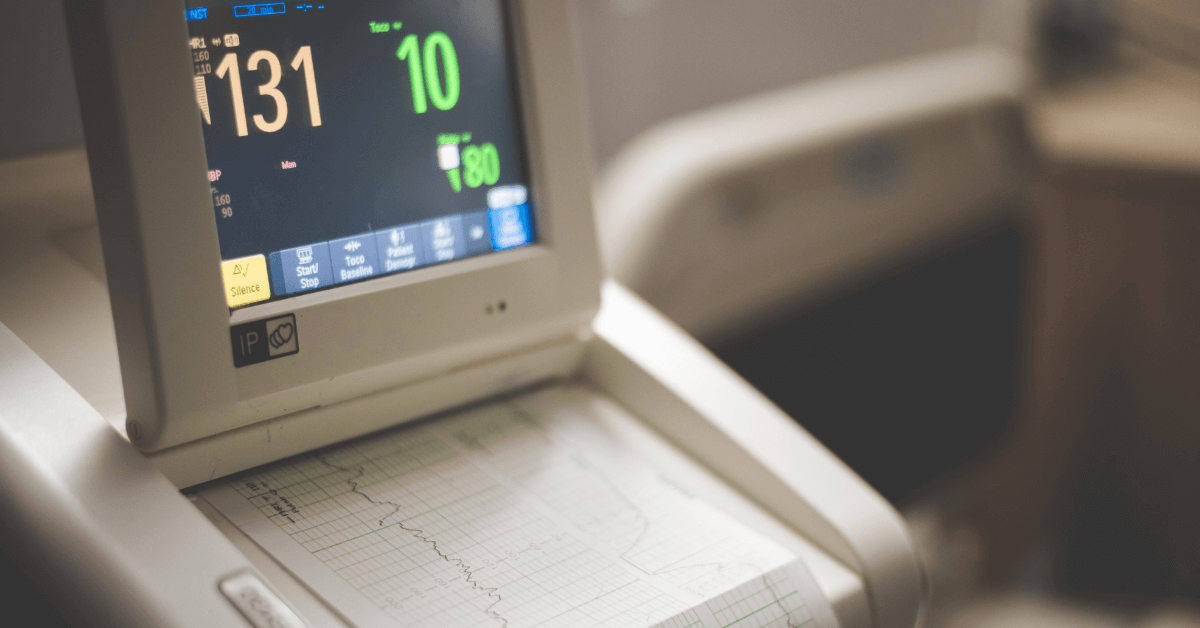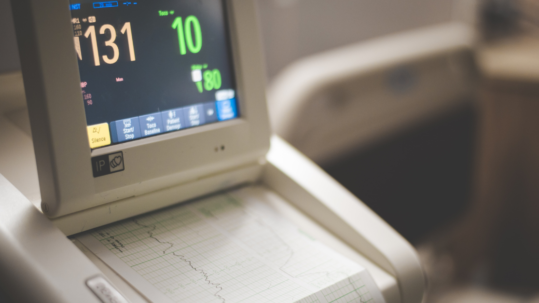
17 Jan What is the Valsalva Maneuver like?
The Valsalva maneuver is the most fascinating thing I’ve gotten to do in this entire medical adventure. On the surface, it’s a fairly quick and easy part of Mayo Clinic’s autonomic evaluation (read more about my experience at Mayo with POTS here), but underneath, it’s one of the coolest and most complicated mechanisms of the human body that I’ve encountered.
So what is it?
At its core, the Valsalva Maneuver is the process of bearing down for about 15-20 seconds, and then returning to a relaxed, breathing state. For autonomic testing, they are watching the data on heart rate and blood pressure to see how the body addresses the provoked imbalance, but it can also be used in emergency situations as a first-line attempt to “reset” the heart into a normal rhythm for certain kinds of abnormal tachycardia (fast heart rate) and in certain situations to restore normal ear/hearing function. And while the test itself may not seem profound, the complex mechanisms certainly are.
The phases of the Valsalva
There are 4 phases that the body goes through when a person does the Valsalva, and the following explanation is my non-medical-professional understanding (use the graph below to follow along, and check out this article from the pros for more info). So phase I kicks off with pizazz, as the bearing down forces the blood out of the chest and through the body, and this swiftly raises the blood pressure. As the person continues to bear down, we move into phase II where the blood pressure starts dropping as the heart struggles to keep enough blood coming into the heart with such pressure/force driving it away. To try and make up for the difference, the heart starts beating faster to get the blood pressure to return to normal. In phase III, the person stops straining, and the sudden relaxation causes another drop in blood pressure. In phase IV, the body tries to correct the drop by speeding up the heart rate but overshoots, causing a brief spike. Vitals then stabilize back to baseline. INSANE! Am I right?!

Credit: Ghazal, S.N. Valsalva maneuver in echocardiography. J Echocardiogr 15, 1–5 (2017). https://doi.org/10.1007/s12574-016-0310-8
Is it painful? What is it like?
The short answer is no, doing the Valsalva maneuver is not painful in the classic sense. However, as someone with autonomic dysfunction, it has historically been uncomfortable and has had side effects that take time to recover from.
I have completed two autonomic evaluations, and though each time was slightly different, they shared many similarities. Each time I was outfitted with a finger blood pressure cuff that continuously measured my blood pressure, as well as a continuous EKG (usually with 3 simple sticky electrodes) that monitored my heart rate. I was given a small plastic bugle (like a little tube) connected to a pressure reading device. I then blew VERY hard on the little tube, and the meter would show how much pressure I was exerting and the goal was to keep it at 40mmHg for 15 seconds.
The first time I did the Valsalva I really struggled to reach (and maintain) this pressure. I passed out before we could get a truly valid test, and once I woke up I experienced significant lightheadedness, ear ringing, and a pounding heart for 5-10 minutes afterward. This incomplete portion of my first autonomic evaluation was somewhat of a loss and was another factor that led to postponed POTS treatment.
The second time went much smoother, and I was prepared to give it my all. I managed to successfully complete 2 of 3 iterations and got much clearer results that indicated abnormal autonomic reflexes. I thankfully didn’t pass out, but my heart was flopping every which way, I was seeing stars, and I got a pretty instant headache that lasted the rest of the day. The technicians saw that the data were very clear and ended the test, saying “We got what we were looking for,” which was both a surprise and a relief. The testing caused a POTS flare the next few day, but it was also in the context of doing additional tests such as the tilt table test, the QSART, and some deep breathing exercises.
Summary
The Valsalva Maneuver points to one undeniable fact: the human body is simply amazing, and there is an infitine number of tiny mechanisms and processes that must happen in order to live a single day. Looking over my own abnormal data, I am reminded that even though my body doesn’t always do what it should, the fact that I am still living and breathing is a gift.
As part of medical testing, my experience with the Valsalva has been overall neutral/positive, and despite some mild discomfort, the data it produced were important to our understanding of how we can move towards recovery in this time of significant limitation.
Have you ever done the Valsalva? What was your experience, and how did it impact your health journey?
-
Making a Full Physical Recovery – A Day-by-Day Miracle
“You should exercise more.” A brutal statement. One I had tried to fulfill on my own, and time and time again, had failed. It was a frustrating piece of advice from my doctor, and felt so out of reach as I navigated my bouquet of chronic illnesses....
27 June, 2024 No comment -
Awesome Recovery News!! And Why I No Longer Plan To Write About My Symptoms
I am so excited to report that after graduating from the 3-week Pain/Symptom Rehabilitation Center at Mayo Clinic in Rochester and continuing the program at home, I am nearly 100% recovered!...
05 March, 2024 3 Comments -
What is the Valsalva Maneuver like?
The Valsalva maneuver is EASILY the most fascinating thing I’ve gotten to do in this entire medical adventure. On the surface, it’s a fairly quick and easy part of autonomic testing, but underneath, it’s one of the coolest and most complicated mechanisms of the human body that I’ve encountered. ...
17 January, 2024 3 Comments






Pingback:Metoprolol Tartrate - POTS Treatment (Part 1 of 3) - Kaley Faith
Posted at 12:53h, 17 January[…] referred me to a cardiologist. I underwent a variety of tests (EKG, Echo, Holter, Tilt Table Test, Autonomic Testing, MCOT Monitor), and the grand result was a “probable” POTS diagnosis, though I was told that […]
Pingback:My Tilt Table Test Experience - Kaley Faith
Posted at 12:54h, 17 January[…] completing the TTT and additional autonomic testing (which I wrote about here), I went down to the medical records office and requested the information from the tests. I wanted […]
Pingback:Mayo Clinic for POTS - An Overview of My Experience - Kaley Faith
Posted at 19:50h, 02 February[…] Valsalva maneuver (read more here) […]